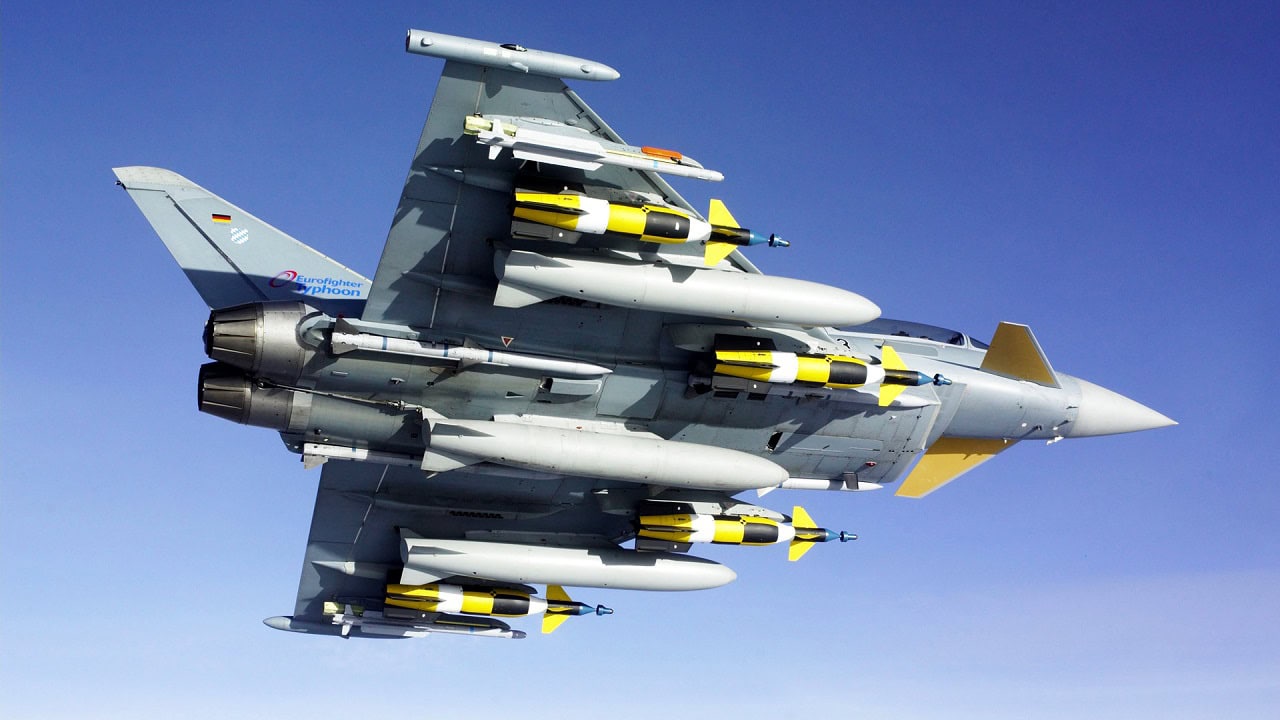While she isn’t stealth like the F-22 or F-35, several countries likely plan to fly the Eurofighter Typhoon well into the future, as the aircraft is slated for a number of key upgrades.
The fast-moving attack fighter jet, which seems to align strategically and in configuration with U.S. F-15s and F-16s, entered service in 2003. Many of the participating Typhoon countries, which include Germany, Spain, Italy, Austria, the UK, Saudi Arabia, and Oman, have embraced a handful of weapons improvements intended to launch the fighter into future decades.
The combat-tested European Typhoon fighter has in recent years been armed with new weapons, targeting technologies, radar, and sensors to ensure its viability for future combat.
This makes sense, and it parallels U.S. efforts to sustain and upgrade the operational functionality and effectiveness of combat-tested platforms such as the F-15 and F-16. These two U.S. fighters have been upgraded so much, they could almost be described as new planes. They have new weapons, radar, computing, avionics, and advanced sensors, all of which dramatically improve performance.
No Escape From the Eurofighter Typhoon
A Typhoon pilot told me a few years ago that the Eurofighter has been flight-testing a European missile called Meteor that greatly increases what pilots refer to as the no-escape range — the distance at which an air-to-air adversary has no ability to fly away from an approaching missile. Typhoon pilots also say that air-to-air capability and overall performance are greatly increased by the aircraft’s thrust-to-weight ratio. Comparing the weight of the engine to the amount of thrust the engine generates, this ratio is a key indicator of speed, maneuverability, and aircraft performance.
The Typhoon can travel at Mach-2, and the Typhoon engines’ thrust-to-weight ratio is 9.3 to 1, making it among best in the world, comparable to the F-22 Raptor. This is accomplished in part by power emanating from the two Eurojet 2000 engines on board the aircraft, and it gets a boost from the aircraft’s light weight. The Typhoon is built with 70% carbon fiber composite and is therefore said to be fast and very agile.
Software Improvements
A Typhoon pilot told me that prior software upgrades have enabled the aircraft to operate with what is called swing-roll capability — the technical capacity to perform several missions simultaneously, such as fire missiles and drop bombs.
The Typhoon’s new active electronically scanned array radar, or AESA, will provide pilots with an expanded field of view compared to the existing radar system. The AESA provides a mechanical ability to rapidly reposition the receiver to increase the area from which it can pick up signals. The new radar is designed to work with other on-board sensors such as forward-looking infrared sensors and passive infrared tracking technology to locate stealth aircraft with a low radar cross section.
In a manner similar to how the U.S. F-35 and F-22 aircraft identify threats through sensing and a threat data library, the Eurofighter’s radar and sensors could combine to help the Typhoon locate aircraft such as the Russian Su-57 and Chinese J-20.
The sensing technology on board the Typhoon fighter is called Pirate, or passive infrared and targeting equipment. It is a combination of infrared search and track and forward-looking infrared sensors.
As for cockpit avionics, the Typhoon has three large LCD displays the pilot can switch between when assessing mission requirements. Many of the displays include situational awareness information such as moving digital maps, atmospheric information, sensor data, and targeting information.
The Typhoon and the U.S. Air Force’s F-22 Raptor have participated in joint training exercises at Nellis Air Force Base, Nevada.
Kris Osborn is the Military Affairs Editor of 19FortyFive and President of Warrior Maven – Center for Military Modernization. Osborn previously served at the Pentagon as a Highly Qualified Expert with the Office of the Assistant Secretary of the Army—Acquisition, Logistics & Technology. Osborn has also worked as an anchor and on-air military specialist at national TV networks. He has appeared as a guest military expert on Fox News, MSNBC, The Military Channel, and The History Channel. He also has a Masters Degree in Comparative Literature from Columbia University.
From 19FortyFive
A Russian Submarine Accidently ‘Destroyed Itself’
Total Massacre’: Ukraine Footage Shows Russian Cruise Missile Shipment Attacked

